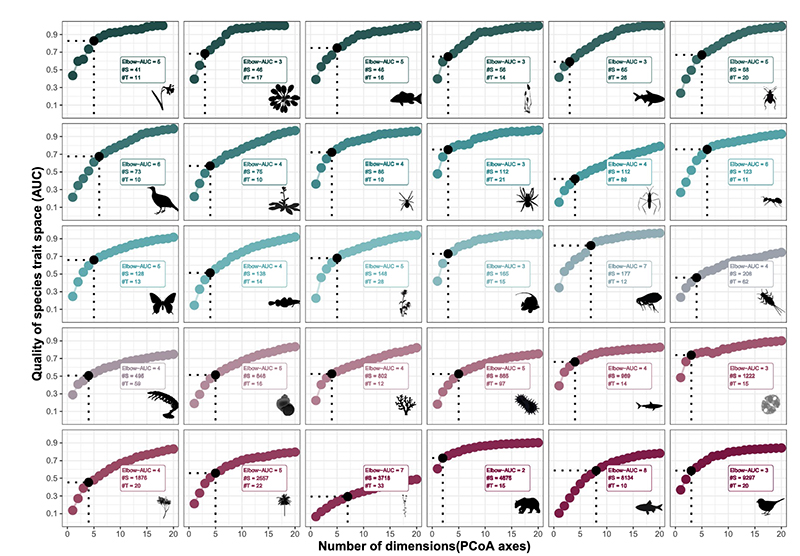THE DIMENSIONALITY AND STRUCTURE OF SPECIES TRAIT SPACES.
Mouillot D, Loiseau N, Grenie M, Algar AC, Allegra M, Cadotte MW, Casajus N, Denelle P, Gueguen N, Maire A, Maitner M, McGill BJ, McLean M, Mouquet N, Munoz F, Thuiller T, Villeger S, Violle C and, Auber A (2021).
Ecology Letters, doi:10.1111/ele.13778
Key message : Here, we propose a unified framework and a synthesis across 30 trait datasets representing a broad variety of taxa, ecosystems and spatial scales to show that a common trade-off between trait space quality and operationality appears between three and six dimensions. The robustness to trait omission is generally low but highly variable among datasets. We also highlight invariant scaling relationships, whatever organismal complexity, between the number of clusters, the number of species in the dominant cluster and the number of unique species with total species richness. When species richness increases, the number of unique species saturates, whereas species tend to disproportionately pack in the richest cluster. Based on these results, we propose some rules of thumb to build species trait spaces and estimate subsequent functional diversity indices.
